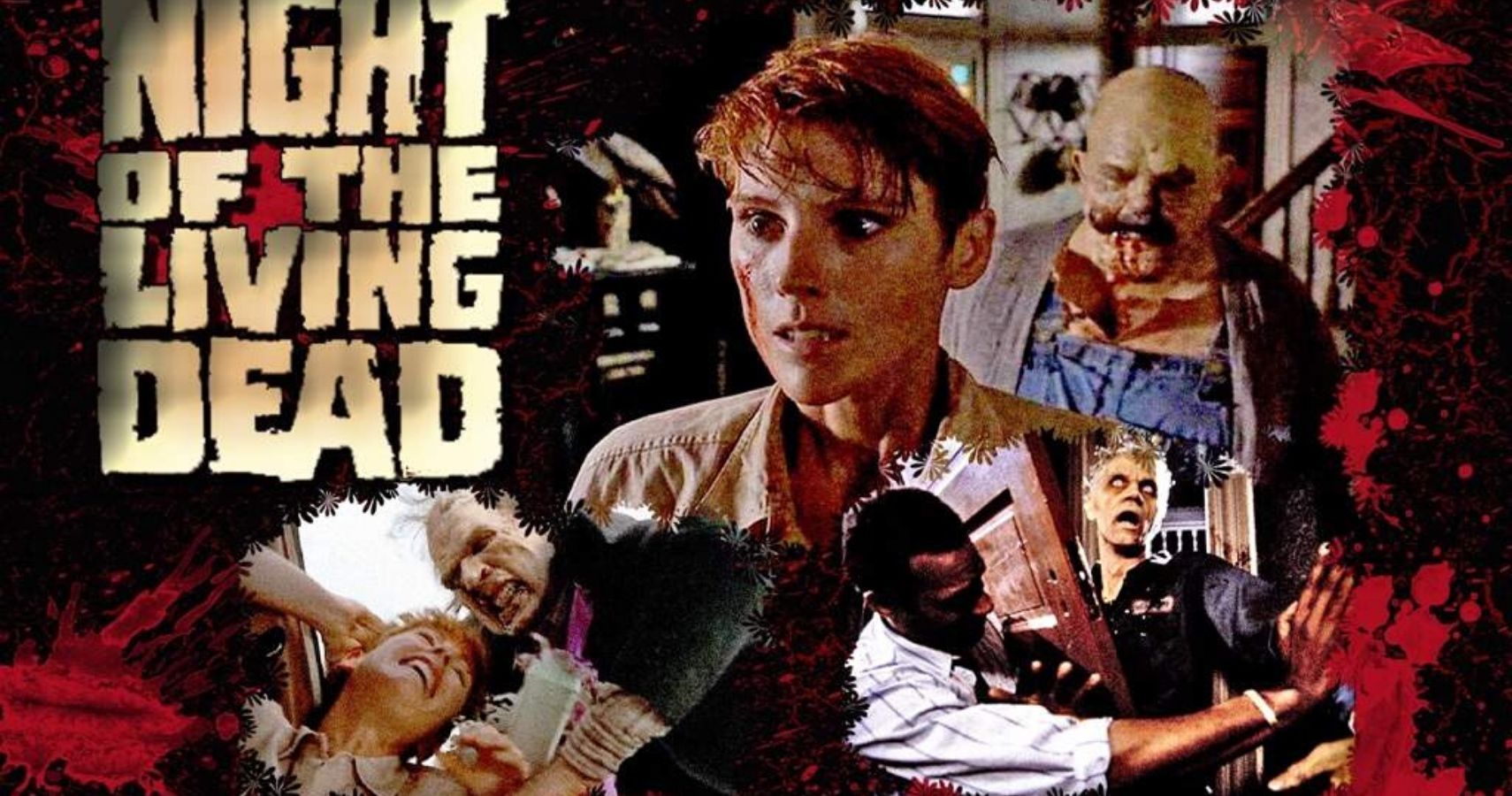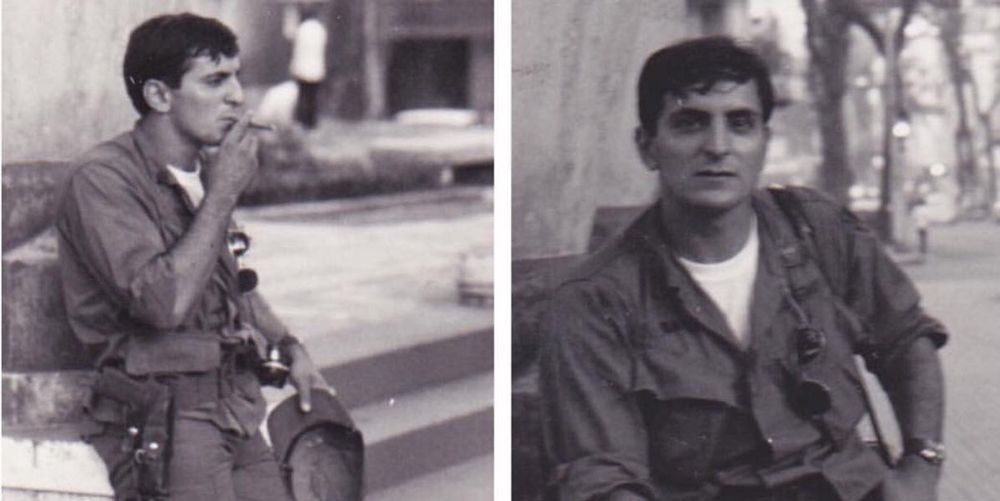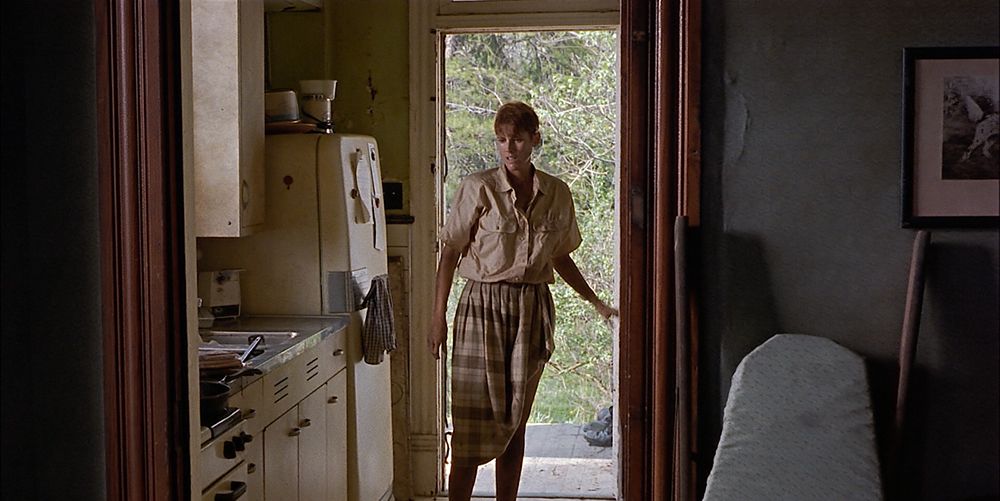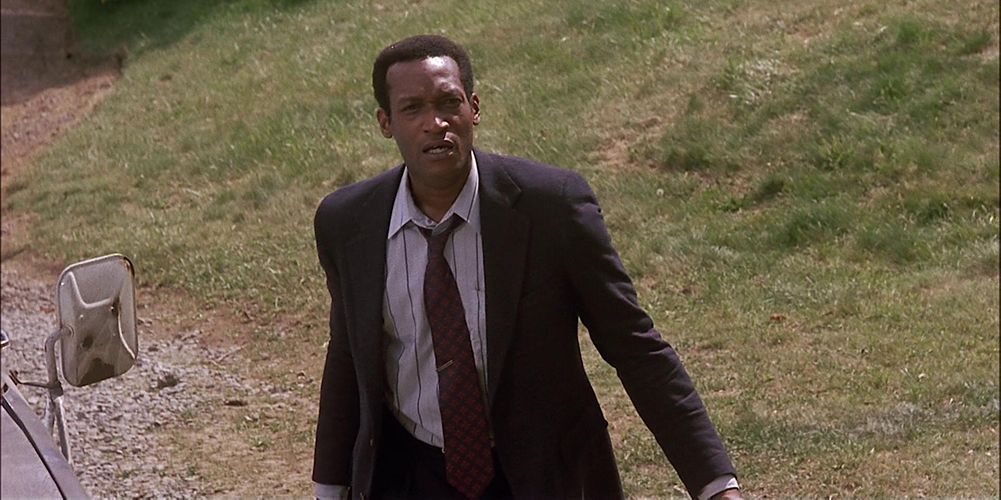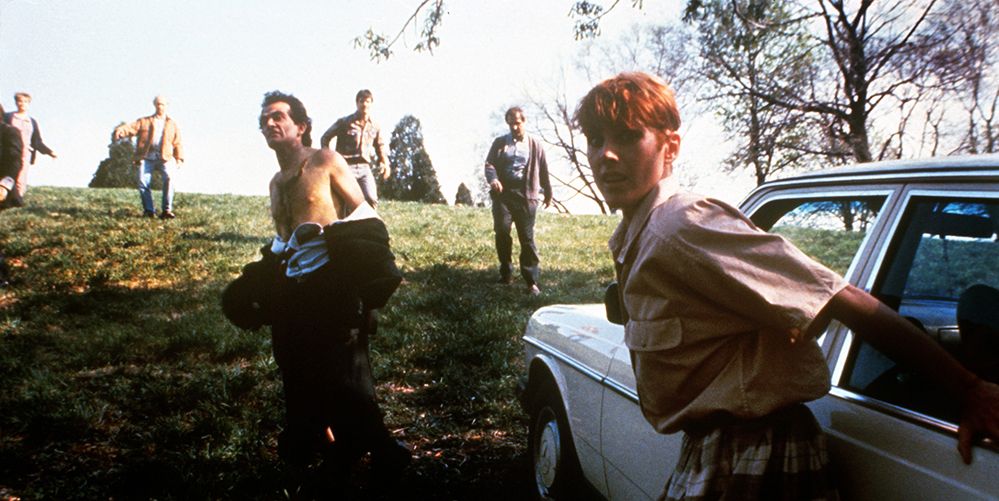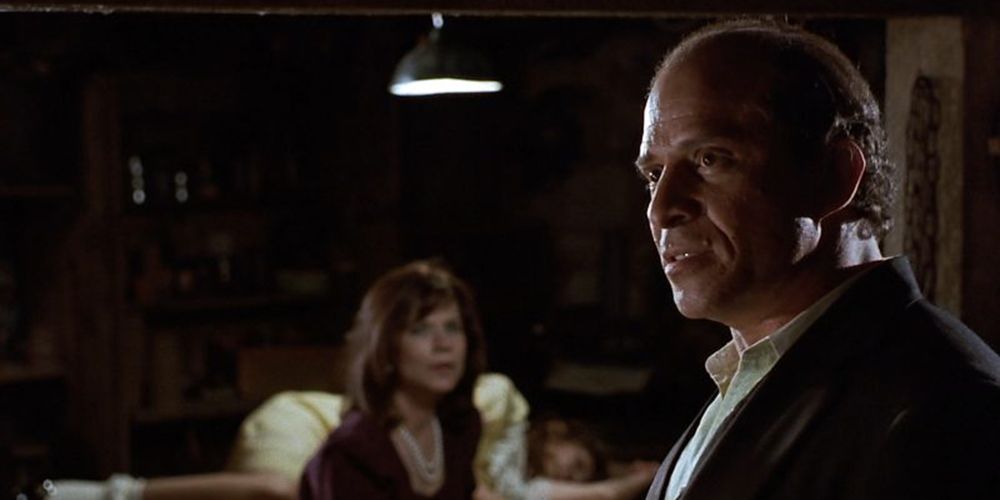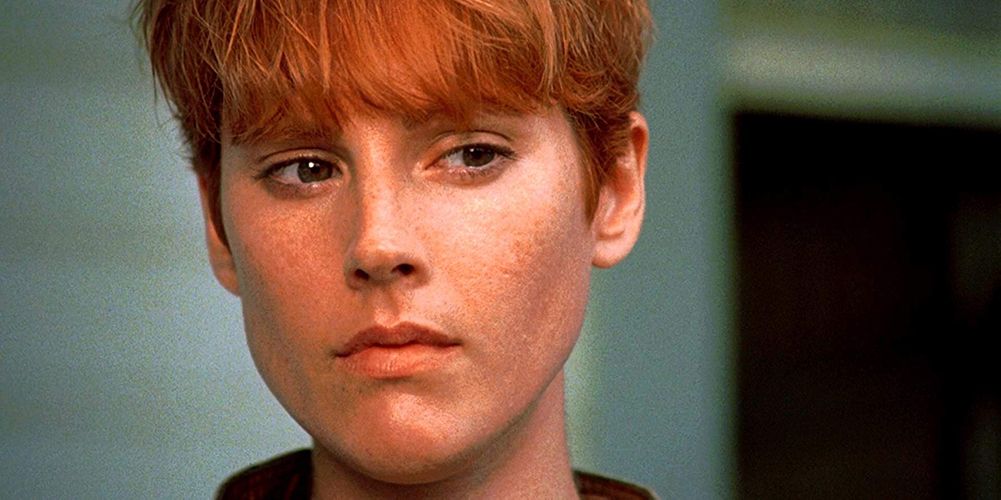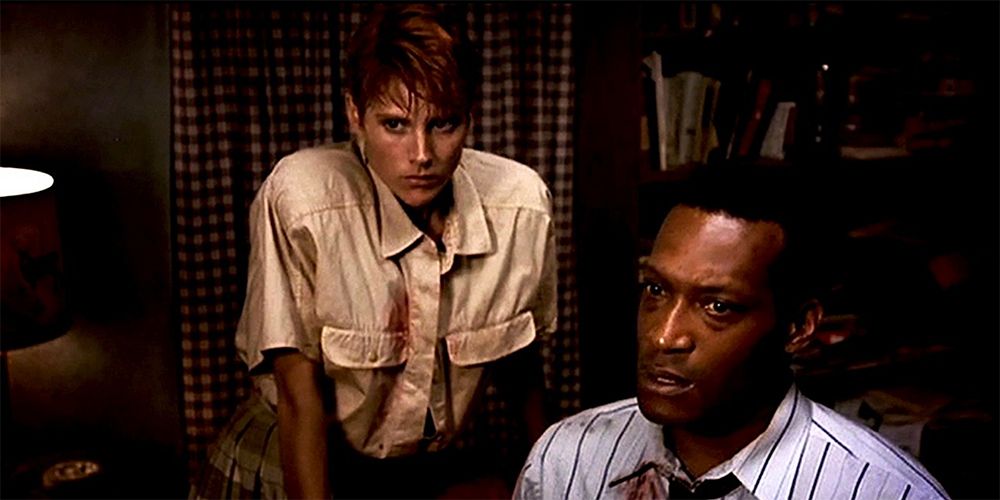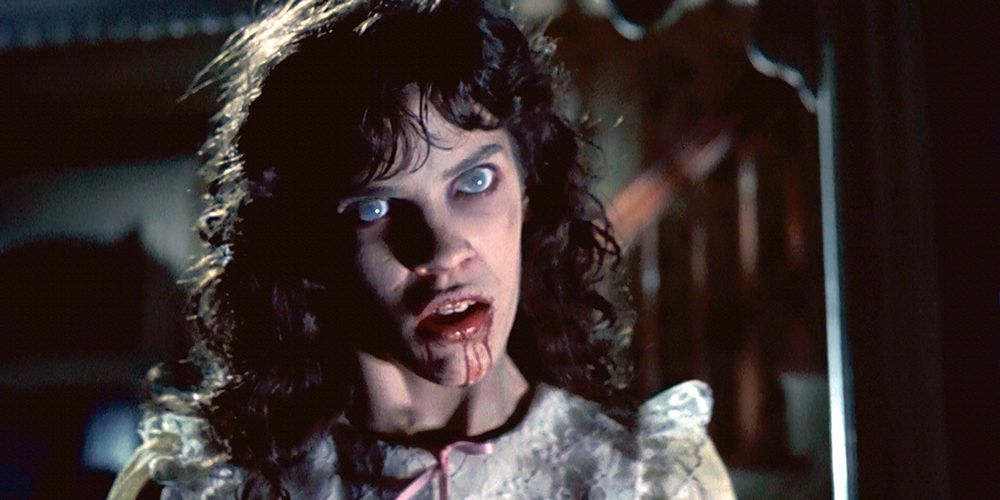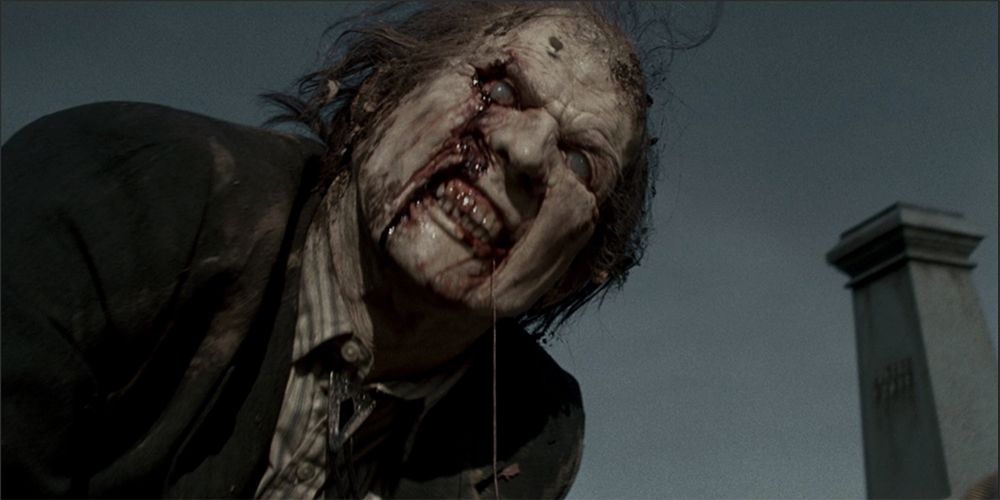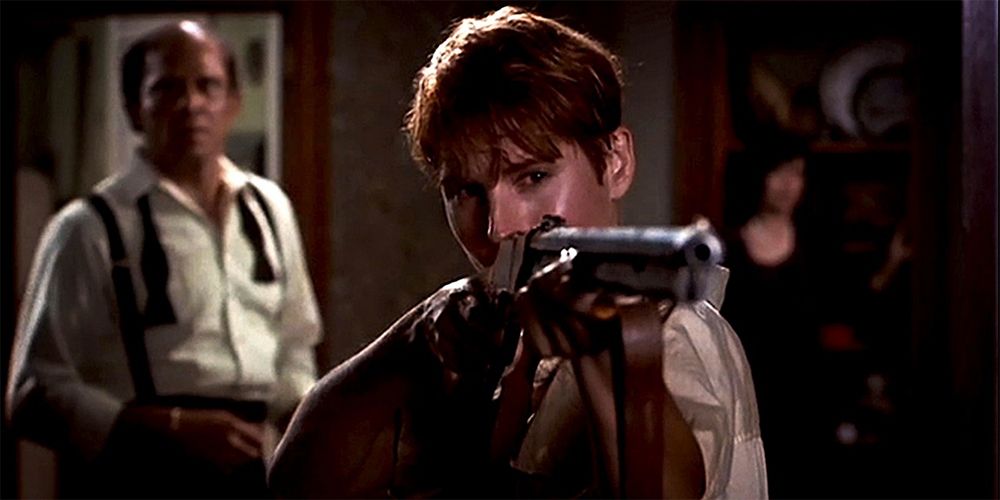Respect. Innovation. Those are two words that are exhumed when talking about the 1990 Night of the Living Dead remake. George A. Romero's 1968 film of the same title will forever be regarded as a classic. There is no argument to be made there. However, its 1990 remake is usually overlooked as a rehash of old ideas with a 1990s paint job.
That is not the case for this unpolished gem within the zombie genre. This remake has enough merit to join the ranks of John Carpenter's The Thing, David Cronenberg's The Fly, and Chuck Russell's The Blob. This retrospective account will shed some light upon the night. Here are the 10 Best Night Of The Living Dead Moments (1990).
Tom Savini, Director
George A. Romero was the architect of the modern zombie genre. Who would be best to construct the remake to Night of the Living Dead? The masterful maestro of makeup macabre, Tom Savini. Savini's name had been solidified with the franchise due to his groundbreaking special effects in the sequels: Dawn of the Dead (1978) and Day of the Dead (1985). Savini had originally been scouted to implement the makeup for the original 1968 film.
Unfortunately, the Vietnam War saw Savini drafted as a combat photographer. The remake allowed him to finally work on the film which was twenty-two years overdue on his resume. This opportunity came in the director's chair.
Placid Opening
The statement "Night of the Living Dead" brings a sense of dread and chill to anyone within earshot. The opening of the original film set an unsettling tone with its musical score, Russell Streiner's line delivery as Johnny along with its black and white palette. The remake managed to introduce a familiar opening with malleability. This is in debt to the concept of contrast. The original's drab cemetery setting is replaced with an exuberant cemetery setting.
Streiner's daunting taunts as Johnny are replaced by Bill Moseley's sarcastic barbs as the same character. All these tweaks are still in service of the same story: an unraveling zombie apocalypse. Results remain the same while the set-ups are molded for the sake of contrast's ability of misdirection.
Tony Todd as Ben
The character of Ben had become an icon thanks in part to Duane Jones' performance in the 1968 original. Casting a black man in the starring role was a radical and innovative movement for the 1960s. George A. Romero spiked untapped potential in that era. How would the remake respond to such a decision? Tony Todd was the confident counter.
Todd's commanding presence was felt full force throughout the film. However, Todd's portrayal as Ben showcased an immense vulnerability. "It doesn't take long for the world to fall apart. Does it?" His booming voice quaked at the evading mystery to this corpse erupting apocalypse. He mightily clung onto his composure as tears seeped from him.
Atmosphere & Tone
Tom Savini's revision of the 1968 classic established a sense of progression. This progression was extremely and successfully gradual. As day melts into night, the audience experienced that with the characters within this caustic circumstance. The natural progression evolved or devolved into a descent into madness. This established a much more grounded and realistic tone.
This allowed the audience to question what they would do during this horrific occurrence. That is what a good filmmaker can do is engage an audience to construct their own decisions. These decisions are influenced by uncomfortable and terrifying situations regarding zombies or warring survivors.
Ben Vs. Cooper
Warring survivors are just as deadly as any flesh-eater. These minuscule tensions could lead to mistakes that could cost them their lives. The rivalry between Ben and Cooper was a volcanic one. The territorial contest between them could be attributed to fear but more so racial tension. "You don't exactly look like a neighbor around here," Cooper scoffed at Ben's arrival.
As the undead terror rises, their feud bitingly bubbled to the surface. Both men voiced their strategies for survival without listening once to each other. "You're boss down there. I'm boss up here," Ben proclaimed. This war of words and lack of communication could cost them everything. This cautionary message reverberates even to this day.
"We're Them And They're Us."
Comparing unfortunate victims to their rangling oppressors is a concept the remake introduced. Tom Savini's Night of the Living Dead could be taken as an allegory to the AIDS epidemic. This disease had been running rampant in the 1980s and into the 1990s. Individuals struck with the disease were chastised, ridiculed, and nearly quarantined within society.
The remake of Night of the Living Dead showcased people succumbing to a deadly disease and being executed for their misfortunes. These two situations mirror one another in an allegorical sense. This remake of a classic contained many more layers to it than audiences ever gave it credit for.
Ironic Turn Outs
One of the major elements introduced in Tom Savini's Night of the Living Dead is irony. Three perspectives come into play within this remake. Barbara, Ben, and Cooper. Each character voiced a strategy to survive the deadly predicament they're all bound together in. Cooper asserted his idea to seclude themselves in the basement. Ben interjected with the notion to barricade themselves upstairs. Barbara prophesized to simply leave the house and maneuver around their slow-paced assailants.
The irony struck hard when Cooper ended up in the attic and Ben within the basement. The more sensical character followed her own tuition by simply evading. Barbara was rewarded with survival by sticking to her guns and fighting for herself.
The 90s Vs. The 60s
Frankly, great art mirrors the era in which it was made. For better or worse this is true. George A. Romero has usually had the ability to reflect the times with his zombie films whether inadvertently or deliberately. Night of the Living Dead was truly a reflection of the civil rights movement of the 1960s. The subtext within the original was much more subdued.
The remake for the 1990s had a much more in-your-face attitude along with a grunge vibe. The ongoing issues from the 1960s were no longer buried. They were now exhumed and placed on display in their gruesome details. The subjects of racism, sexism, and disease were now open for a showcase.
Gore Galore
With the 1990s in-your-face attitude and Tom Savini at the helm as director, the gritty realism of the subject matter was updated. Chocolate syrup and ping-pong balls were replaced with stage blood and latex by the gallon. The advancement in makeup effects allowed the remake to breathe and relish in realism.
New techniques and materials aided in professing the story to a modern audience. These grotesquely gorgeous growths set the tone of the remake as well. Blood and guts were on display for a much more desensitized tale for a much more desensitized era.
Patricia Tallman as Barbara
An underrated remake contained an underrated actress in an underrated performance. That is criminal. Patricia 'Patty' Tallman played Barbara in the 1990 remake of Night of the Living Dead. Her performance was one to be seen, heard, and admired. For the 1990s, Barbara was no longer a mumbling catatonic victim. She was now a fighting survivor who thinks for herself and literally puts the pants on in the situation. Her emotions never once strained her adaptability.
Tallman transitioned from a terrified mousey teacher to a revolver wielding strategist. All the while, she held onto her humanity by showcasing sympathy and empathy to all around her...living or dead.

